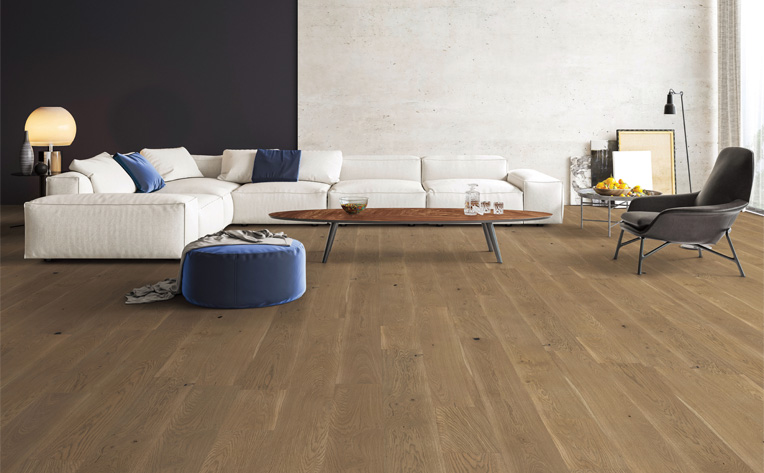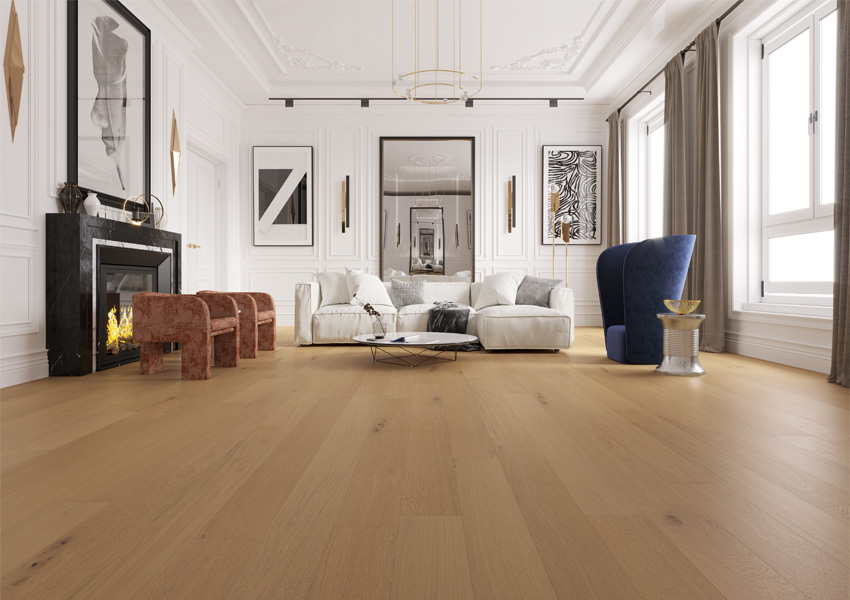May 07, 2025 | Flooring Canada

If you're planning a flooring project, you’ve likely come across the term subfloor. While it's the part of your floor that you can’t see, it plays a vital role in ensuring your flooring looks great and lasts for years to come. But what exactly is a subfloor? Why is it so important, and how does it impact your overall flooring installation?
This guide dives into everything you need to know about subfloors—from understanding what they are, to exploring different types and learning how they contribute to the structural integrity of your home.
A subfloor is the sturdy structural layer beneath your visible flooring (like hardwood, vinyl, or tile). It rests on top of your home’s floor joists, creating a solid foundation that supports both the underlayment and surface flooring above.
Think of the subfloor as the backbone of your flooring installation. It provides stability, ensures your flooring materials lie flat, and protects against structural issues like squeaks, sagging, or water damage.
To understand where the subfloor fits into your home, let's break down the typical flooring system into its layers:
A strong subfloor creates a solid foundation for your home's flooring system. Here are some key benefits of properly installed subfloors:
Understanding the materials used for subfloors can help you choose the right one for your flooring project. Here are the common subfloor options:
A popular choice, plywood subfloors are made from thin layers of wood veneer glued together. They’re strong, flat, and resistant to warping. Plywood is suitable for most types of flooring, like vinyl and hardwood.
Made from small strands of wood bonded with resin, OSB subfloors are known for their density and moisture resistance. While plywood dries out faster if wet, OSB is generally more cost-effective and equally durable.
Typically found in basements or high-rise buildings, concrete subfloors are incredibly sturdy. However, they may require an underlayment for additional comfort, insulation, or dampness prevention.
Once common, particleboard (made from sawdust and resin) is rarely used as a subfloor material today due to its lack of strength. It’s better suited as an underlayment.
Over time, subfloors can be compromised due to wear and tear, water damage, or improper installation. Watch out for these common signs of subfloor issues:
If you suspect subfloor problems, consult a flooring professional for an inspection and repair options.
While often confused, the subfloor and the floor are very different components of your home’s structure. The subfloor is the hidden support layer, while the floor is the visible surface material you walk on. Without a solid subfloor, your chosen floor material may not perform as expected—so both layers are equally important.

1. Is subflooring necessary?
Yes! Without a subfloor, your flooring wouldn’t have a stable base, resulting in creaks, cracks, and eventual damage.
2. Does every home have a subfloor?
Not always. Homes built on concrete slabs may not use a wooden subfloor layer since the concrete itself serves as the foundation and subfloor.
3. Can I install new flooring over damaged subfloors?
It’s not recommended. Your new flooring will only be as stable as the subfloor beneath it. Always address any issues before installation. Trusting your local flooring experts can ensure your flooring installation is performed to the highest standard over a subfloor that is sound.
While subfloors may not steal the show like your hardwood floors or colourful tile, they’re the unsung heroes of a reliable flooring installation. By providing strength, stability, and moisture protection, they ensure your flooring looks flawless and lasts for years to come.
If you're planning a flooring renovation or have noticed signs of subfloor damage, don’t wait—address the problem now. A solid subfloor is an investment in the longevity and beauty of your home. Need help with your flooring installation? Contact a professional or explore our flooring to get started!